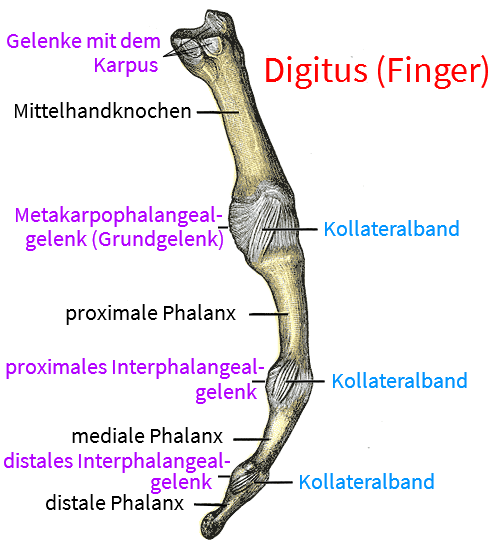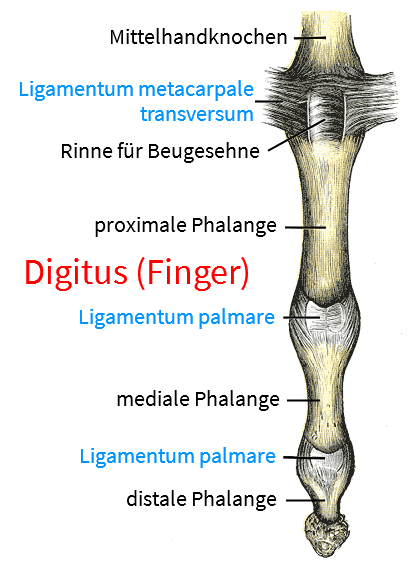yogabook / joints / interphalangeal joint
Contents
Image: Finger joints from the side

Interphalangeal joint
Interphalangeal joints are the joints between the phalanges (phalanges) of the fingers or toes. They connect the proximal and medial phalanx of a finger or toe as the proximal interphalangeal joint (PIP) or the medial and distal phalanx of a finger or toe as the distal interphalangeal joint (DIP).
Articulating bones
- Metacarpalia(metacarpal bone)
- Phalanges(proximal, medial, distal)
Joints
A distinction is therefore made:
- Proximal interphalangeal joint of the fingers
- Distal interphalangeal joint of the fingers
- Proximal interphalangeal joint of the toes
- Distal interphalangeal joint of the toes
whereby both the hallux (big toe) and the pollex (thumb) have only one interphalangeal joint.
The metatarsophalangeal joints of the toes and the metacarpophalangeal joints of the fingers are therefore not part of the interphalangeal joints, as they connect the proximal phalanges with the metatarsals or metacarpals. With the exception of the thumb and the big toe, there are two interphalangeal joints(proximal and distal) between the phalanges in the fingers and toes; in the former there is only one. The interphalangeal joints offer only one dimension of movement: flexion and extension. Extension in the fingers is limited to little more than 0°, in the toes it is around 90°. Flexion is limited to less than 90° in both cases.
Like the fingers, the toes also have no adduction or abduction ability in the interphalangeal joints and therefore no muscles stabilizing in these directions, so that varus and valgus stress in the interphalangeal joints must be prevented in asanas in order to protect the collateral ligaments from damage.
Ligaments
For the ligaments, see the finger joints page.
Tests
Tests of the interphalangeal joints
Differentiation of mobility limits
Tests of the movement directions
Tests of the spanning muscles
Images
Finger joints from palmar

